Oil steals all the headlines, but the virtual water that goes into producing the things we eat, wear and use every day is the biggest risk to humanity

I used 140 litres of water to make my cup of coffee this morning. You did, too. It takes 140 litres of water to grow and process the coffee beans to make one regular cup of joe. That’s a lot considering the average bathtub holds 60 to 80 litres.
Add today’s breakfast binge to my two cups of coffee (280 litres) and we get nearly 1,000 litres: small orange juice (200 litres); two slices of toast (112 litres); two eggs (400 litres). It’s not even 8 am and I’ve consumed enough water to swim in.
Even after 20 years of covering environmental issues, I’m still amazed it took 7,600 litres to make my jeans and another 3,000 litres for my T-shirt. That’s how much water was needed to grow and process the cotton.
We’re surrounded by the hidden costs of water. Thousands of litres are consumed in making everything we eat and buy. I choose the term “consume” because this water can no longer be used for anything else.
Cars, furniture, books, dishes, TVs, highways, buildings, jewellery, toys and even electricity and gasoline would not exist without water. We can’t see this “virtual” water, but it’s as real as the liquid we drink. Oil steals all the media headlines, but water is far more valuable and important.
In January, the dark-suited VVIPs at the World Economic Forum emerged from their secluded retreat in Davos, Switzerland, to declare water scarcity the biggest risk facing humanity in the next 10 years. Two in five people already suffer regularly due to a lack of water, and that number’s rising to three in five by 2025. Peak water is here. This has huge implications for food production, among other things.
Climate change is one of the driving factors, but the biggest is our growing water consumption to make all our stuff.
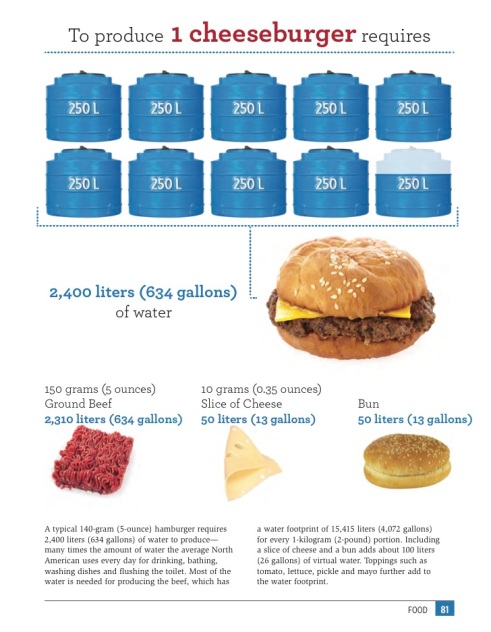
The water footprint of a 500 ml bottled of water is 5.5 litres: 0.5 for the drinking water and another 5 contaminated in the process of making the plastic bottle from oil.
The 5 litres are as real as the 500 ml, but hardly anyone in business or government accounts for it. The waste of water is another reason to stop using bottled water, plastic bags and other single-use plastics.
Arjen Hoekstra at the University of Twente in the Netherlands originated the concept of water footprints.
The amount consumed to make something can vary enormously depending on where the raw materials come from and how they’re processed. Rice grown in the dry desert air of California, for example, needs a lot more water than rice grown in humid Thailand.
One of the biggest surprises is how much less water goes directly to drinking, cooking and showering than to agriculture and manufacturing.
The average Canadian uses around 300 litres a day. (Flushing toilets makes up the biggest part of that, not showers.)
Now, 300 litres is not a trivial amount. Imagine hauling 300 kilos of water in buckets every day.
However, the virtual water that’s in the things we eat, wear and employ in North America each day averages 7,600 litres, resulting in a daily water footprint of almost 8,000 litres per person. That’s more than twice the global average. Think of running shoes side by side: the global shoe is a size 8; the North American a size 18; in China or India a size 6.

Water scarcity is an increasing reality in Canada.
This year, Vancouver and other parts of the “wet coast” in British Columbia are under water restrictions. In Alberta, farmers are unable to grow crops to feed their cattle.
In the U.S., California’s four-year drought appears to be part of a larger climate-change-driven mega-drought affecting the entire Southwest. Around 90 per cent of California’s water footprint is consumed by agriculture and industry.
Sure, lawns are dumb in a state that is mostly desert, but so is growing 5 billion pounds of rice or being the U.S.’s largest dairy producer.
The good news is that we can do nearly everything using less water.
While low-flow shower heads and toilets are great, the water footprint concept can lead to even bigger reductions. It’s all about smart substitutions and changes rather than sacrifice and self-denial, but we can’t make the right choices unless we begin to see and understand our invisible reliance on water.
Four ways we can all help save millions of litres of water
• Downsize your plate size to cut food waste. Forty per cent of all food in North America is wasted, including the incredible amounts of water used to produce it.
• Ignore best-before dates. They have nothing to do with food safety.
• Serve chicken instead of beef to reduce water use. Add in Meatless Mondays and your yearly water savings would nearly fill an Olympic-sized pool.
• Buy local.
Stephen Leahy is an award-winning environmental journalist and author of Your Water Footprint: The Shocking Facts About How Much Water We Use To Make Everyday Products.stephenleahy.net
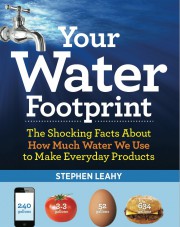







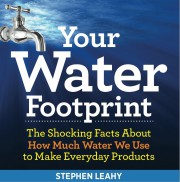 – The Shocking Facts About How Much Water We Use to Make Everyday Products by Stephen Leahy is a great example of a book that is shining the light on the impact we are having on the world’s limited fresh water supply.
– The Shocking Facts About How Much Water We Use to Make Everyday Products by Stephen Leahy is a great example of a book that is shining the light on the impact we are having on the world’s limited fresh water supply.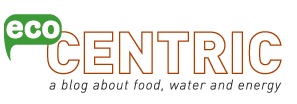

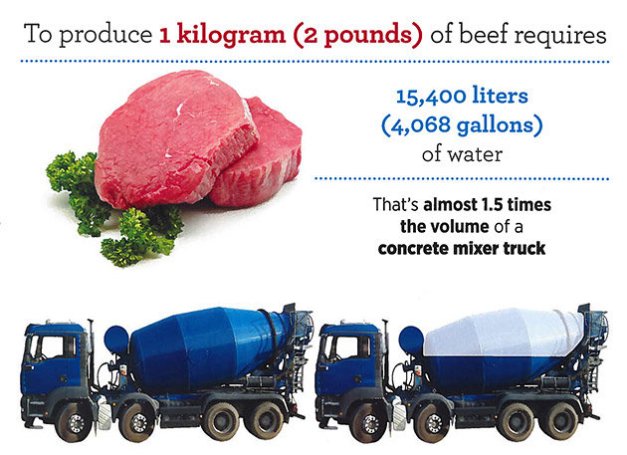
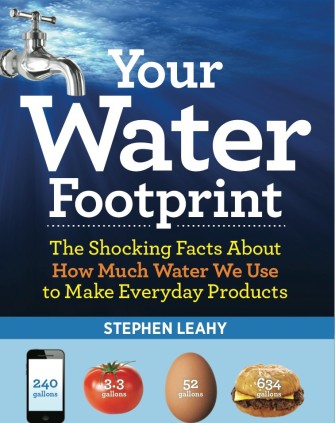 00 litres a year. That’s enough to fill an Olympic-sized pool to a depth of two feet. The reason is the
00 litres a year. That’s enough to fill an Olympic-sized pool to a depth of two feet. The reason is the
